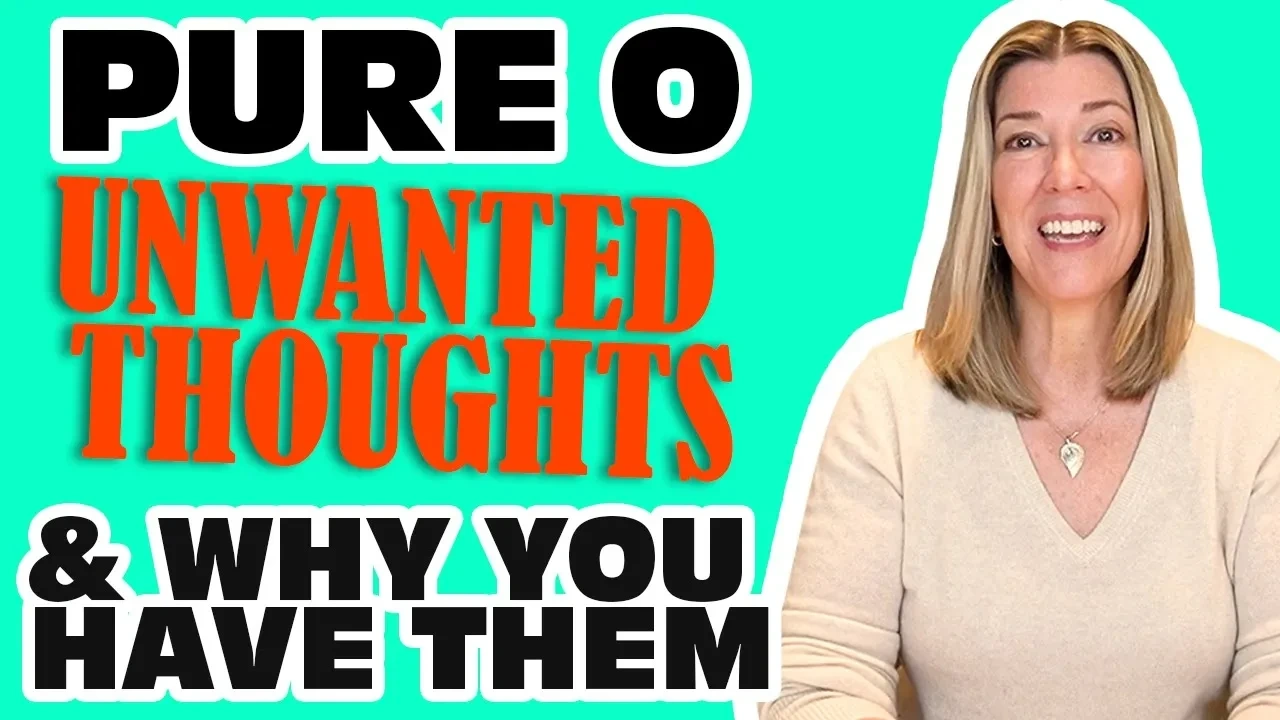
Pure O OCD: Unwanted Thoughts and Why You Have Them
The experience of unwanted intrusive thoughts, particularly prevalent in Pure O OCD, can be profoundly overwhelming. These intrusive thoughts, characterized by their distressing and involuntary nature, distinguish themselves from ordinary cognitive processes. In this blog post, we delve into the reasons behind their emergence.
Pure O OCD and Unwanted Intrusive Thoughts: Delving into the Mechanism
Experiencing unwanted, intrusive thoughts can be distressing, particularly in the context of Pure O OCD. Understanding why these thoughts occur, how they differ from regular thoughts, and how Exposure and Response Prevention (ERP) therapy can offer relief.
Disorder of Overcontrol and Unwanted Thoughts:
Contrary to impulsive disorders, like impulsivity disorders, disorders of overcontrol, such as OCD, involve excessive control. The desire for absolute certainty and zero doubt can inadvertently lead to the development of intrusive thoughts.
Differentiating Impulses and Intrusive Thoughts:
Impulses involve acting before thinking, while intrusive thoughts involve having control over behaviour but succumbing to relentless overthinking. People with OCD, including Pure O, are not impulsive; instead, they meticulously control their actions.
Understanding Pure O OCD:
"Pure O" is a term coined to describe individuals with OCD who experience obsessions without overt compulsions. However, mental compulsions exist and are more subtle. These include ruminating, analyzing, praying, counting, and trying to neutralize negative thoughts with positive ones.

Are you struggling with OCD or Pure O? Do obsessive thoughts, rituals, and compulsions take over your life? Has it been hard to find a specialist to help you?
If you want to get your life back from OCD or Pure O,
this course is for you.
How Unwanted Thoughts Become Obsessions:
-
Sticky Thoughts and Fight-or-Flight: Intrusive thoughts often trigger an adrenaline rush due to activating the fight-or-flight response.
-
Opposite of Character: Intrusive thoughts focus on the opposite of what individuals value, making them ego dystonic and disturbing.
- Reaction to Thoughts: Anxious reactions, mental compulsions, reassurance-seeking, and avoidances perpetuate the obsession.
The Role of ERP in Treatment:
Exposure and Safety Learning:
- ERP involves allowing oneself to think about the feared thought deliberately.
- By repeatedly engaging with the thought, the brain creates new safety learning, weakening the link to the fight-or-flight response.
-
Wrong Response: Trying to suppress, avoid, or neutralize intrusive thoughts worsens the situation.
-
Right Response: Allowing intrusive thoughts to exist without attempting to eliminate or suppress them.
Treating Pure O OCD with ERP:
-
Gradually exposing oneself to feared thoughts.
-
Resisting mental compulsions like analyzing and ruminating.
-
Embracing uncertainty and doubt.
Understanding the intricacies of unwanted and intrusive thoughts, as well as recognizing the pivotal role of Exposure and Response Prevention (ERP), is essential for effectively managing Pure O OCD. By cultivating a comprehensive understanding of the underlying mechanisms at play and embracing ERP techniques, individuals can embark on a journey towards regaining control over their thoughts and ultimately achieving a higher quality of life. Stay informed, seek professional guidance, and remain committed to the path of self-improvement to conquer the challenges posed by Pure O OCD through informed and strategic approaches.
Let's Keep in Touch
Subscribe to My Newsletter
We hate SPAM. We will never sell your information, for any reason.







